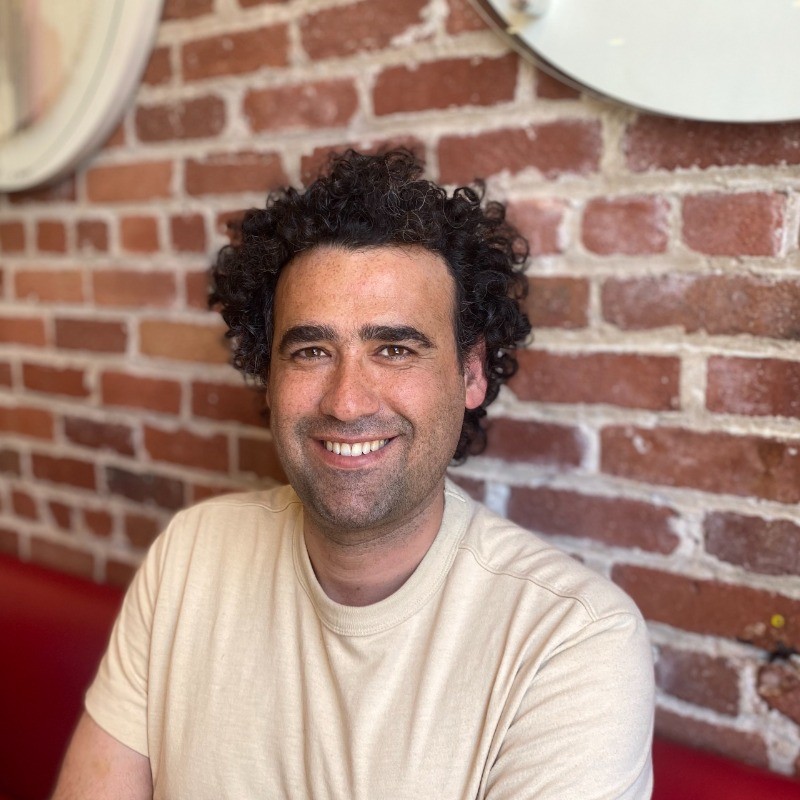Our Team
Energy Quotient™ builds products at the intersection of power systems, modern software, and design. Our team bridges the physical and digital worlds — from the physics of electrical distribution to edge AI and intuitive, insightful user interfaces.

Kevin Davies, PhD
Founder & CEO

Kevin brings 25 years of experience in electrical, mechanical, and software engineering. As former faculty at the University of Hawaii and an engineer at Ford Motor Company, he developed deep expertise in power systems, battery technologies, and renewable integration.
He founded Energy Quotient (EQ) to build the tools he wished existed — rooted in a long-standing commitment to smarter, cleaner, and more resilient energy systems.
Kevin is a co-inventor on multiple power system patents, including two awarded and two pending. He earned his PhD in Mechanical Engineering at Georgia Tech, where his research focused on multiphysics modeling of fuel cell systems.

Anthony Reffle
Software Lead

Anthony leads software architecture at EQ, focusing on embedded systems, networking, data infrastructure, and edge AI. He has helped extend and refine the company’s real-time waveform streaming pipeline and has built a modular, memory-safe Rust-based platform for power quality analytics.
His expertise spans Rust, Linux kernel development, and real-time systems engineering — enabling the low-latency, deterministic performance required for mission-critical power applications. Most recently, Anthony architected EQ’s edge-deployable AI stack, including a vectorized retrieval engine and SLM routing layer for real-time, signal-grounded intelligence.
Anthony brings a rare combination of systems thinking, hands-on engineering depth, and creative autonomy — the backbone of EQ’s real-time software stack.

Chuck LoCascio
UX Designer

Chuck brings 15 years of UX design excellence from leadership positions at BlackRock, SVB, and Accenture. His expertise in rapid prototyping and interface design solves one of the biggest challenges in power quality: making complex electrical phenomena both understandable and actionable.
His work transforms overwhelming streams of waveform and event data into clear, intuitive visualizations — enabling facility managers, engineers, and executives to take confident, timely action. Chuck ensures that our most advanced analytics remain accessible to users at every technical level, helping bridge the gap between signal and strategy.

Mohamad Nasr-Azadani, PhD
AI Advisor

Mohamad advises EQ across AI, business, and technical strategy. Specifically, he helps shape the application of machine learning and contextual AI — ensuring our tools deliver actionable, system-aware intelligence. He has contributed to the design of key technical assets, including EQ’s provisional patent, while sharpening our approaches to edge-based PQ analytics.
A former Principal R&D Data Scientist with a foundation in mechanical engineering, Mohamad brings a cross-disciplinary perspective grounded in both academic rigor and enterprise deployment. He has authored 15+ patents, 20+ peer-reviewed publications, and led co-innovation projects with Fortune 500 companies that have generated over $50M in direct sales.
Why This Team
Our competitive advantage comes from a combination of capabilities rarely found together:
- Hardware-software integration: We control the full stack — from custom sensor hardware to edge-deployable AI
- Real-time systems expertise: Kernel-level programming meets power systems engineering
- Practical AI application: Machine learning grounded in physical understanding and operational context
- User-centered design: Complex technology made clear, navigable, and effective for real-world use
This combination allows us to do what neither traditional hardware vendors nor software-only companies can: deliver laboratory-grade monitoring at industrial scale, with interfaces built for action — not just observation.
